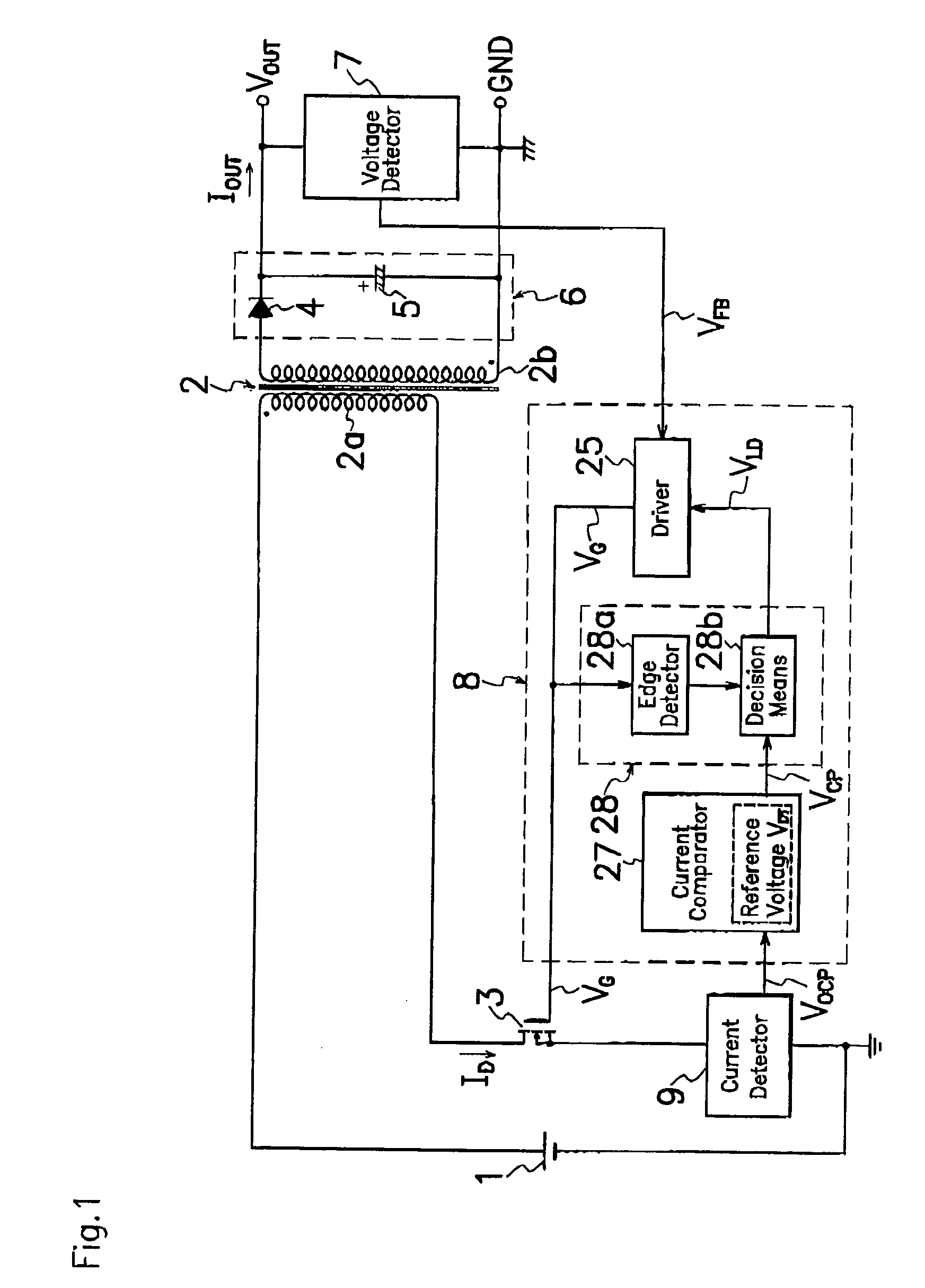Switching power source device
a power source and switching technology, applied in the direction of electric variable regulation, process and machine control, instruments, etc., can solve the problems of reducing the conversion efficiency of the light load period, reducing and reducing the oscillation frequency of the drive signal. , the effect of improving the conversion efficiency of the switching power sour
- Summary
- Abstract
- Description
- Claims
- Application Information
AI Technical Summary
Benefits of technology
Problems solved by technology
Method used
Image
Examples
Embodiment Construction
[0042] Embodiments of the switching power source according to the present invention will be described hereinafter in connection with FIGS. 1 to 25 of the drawings.
[0043]FIG. 1 is a block circuit diagram indicating a basic concept of a switching power source according to each embodiment of the present invention. The switching power source shown in FIG. 1 comprises a DC power source 1; a primary winding 2a of a transformer 2 and a switching element or MOS-FET (Field Effect Transistor of MOS type) 3 connected in series to DC power source 1; a rectifying smoother 6 which comprises a rectifying diode 4 connected to a secondary winding 2b of transformer 2 and a smoothing capacitor 5 to generate DC output voltage VOUT; a voltage detector (output voltage detecting circuit) 7 for sensing DC output voltage VOUT; a control circuit 8 which comprise a driver 25 for receiving detection signals VFB from voltage detector 7 and supplying MOS-FET 3 with drive signals VG to turn MOS-FET 3 on and off ...
PUM
 Login to View More
Login to View More Abstract
Description
Claims
Application Information
 Login to View More
Login to View More - R&D
- Intellectual Property
- Life Sciences
- Materials
- Tech Scout
- Unparalleled Data Quality
- Higher Quality Content
- 60% Fewer Hallucinations
Browse by: Latest US Patents, China's latest patents, Technical Efficacy Thesaurus, Application Domain, Technology Topic, Popular Technical Reports.
© 2025 PatSnap. All rights reserved.Legal|Privacy policy|Modern Slavery Act Transparency Statement|Sitemap|About US| Contact US: help@patsnap.com



